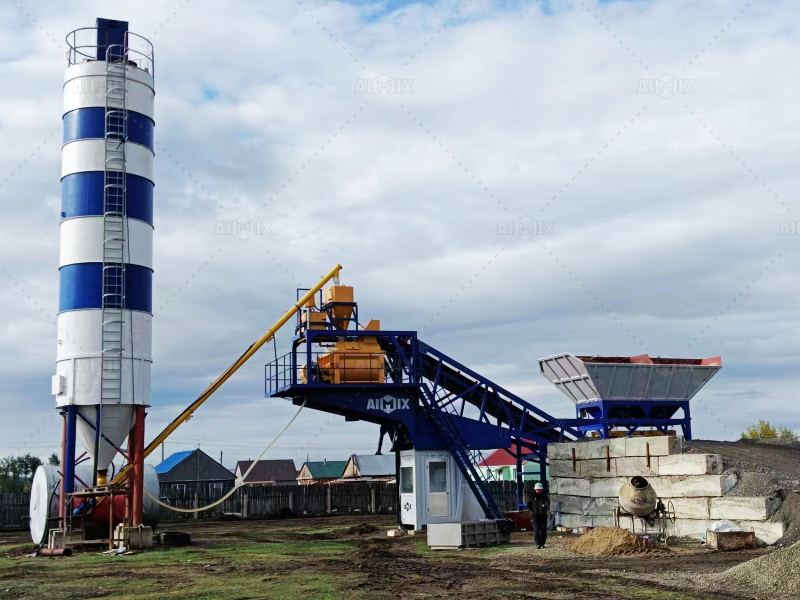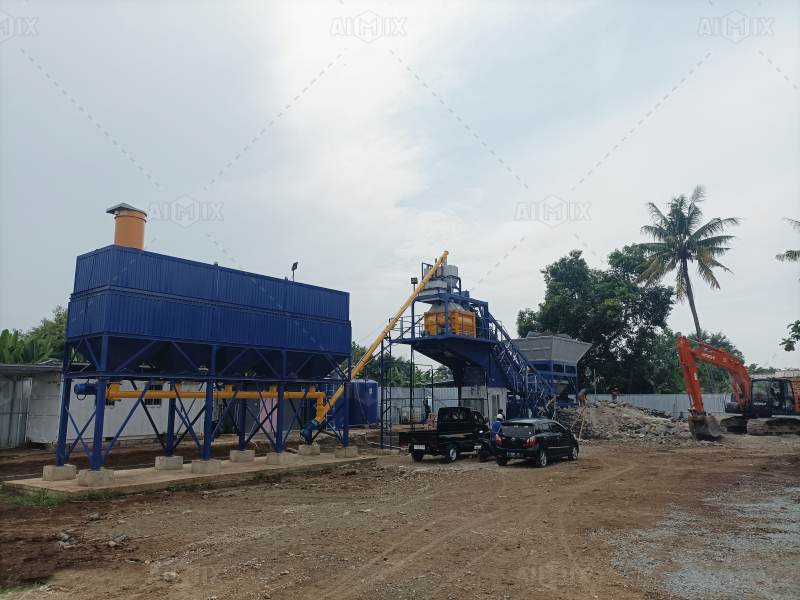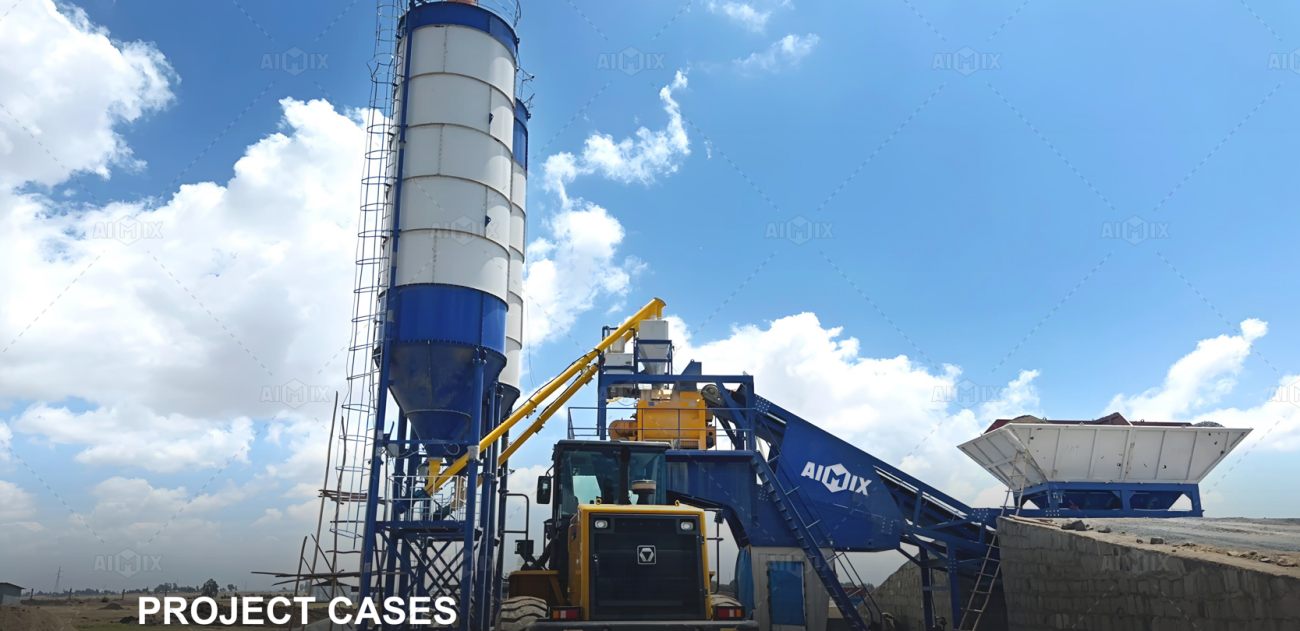The versatility of the mobile concrete batching plant has made it a popular choice across different regions of the world. Unlike stationary plants, mobile models are designed for rapid setup, easy relocation, and adaptability to diverse job site conditions. However, one critical factor that influences their effectiveness is climate. From tropical humidity to arid deserts and cold winters, climate affects the performance, durability, and maintenance requirements of these plants.
This article examines how mobile concrete batching plants perform in varying climates, with examples from the mobile concrete batching plant Philippines, mobile batching plant South Africa, and mobile batch plants Australia markets.

The Impact of Climate on Concrete Production
Concrete production is highly sensitive to environmental conditions. Temperature, humidity, and rainfall all influence mixing ratios, setting times, and final concrete strength. Mobile batching plants, due to their flexibility, are often deployed in challenging environments where stationary plants may not be practical.
Key climate factors affecting performance include:
- Temperature: Extreme heat accelerates setting, while cold slows hydration.
- Humidity: High moisture can alter aggregate quality and water requirements.
- Rainfall: Heavy rain may disrupt batching cycles and require protective measures.
- Wind and Dust: Common in arid regions, these increase wear and demand dust suppression systems.
Performance in Tropical Climates: The Philippines
In the Philippines, a country with high humidity, frequent rainfall, and hot weather, the mobile concrete batching plant Philippines market has adapted with customized features. Plants often include:
- Moisture Control Systems: Automated sensors adjust water input based on aggregate moisture levels, ensuring consistent concrete quality.
- Protective Covers: Aggregate bins and conveyors are shielded to prevent rainwater infiltration, which could otherwise disrupt batching accuracy.
- High-Performance Mixers: Fast-mixing twin-shaft or planetary mixers reduce the risk of premature setting in high temperatures.
Contractors in the Philippines favor mobile batching plants for island and coastal projects, where transporting concrete from stationary plants is impractical. Their ability to relocate quickly between sites makes them ideal for infrastructure projects spread across archipelagos.

Performance in Arid and Semi-Arid Climates: South Africa
In South Africa, climate conditions range from dry deserts to humid coastal areas. For the mobile batching plant South Africa market, durability and dust management are key concerns. Plants here often incorporate:
- Dust Suppression Systems: Enclosed conveyors and dust collectors reduce environmental impact and equipment wear in dry regions.
- High-Temperature Resistance: Components like belts, seals, and mixers are upgraded to withstand scorching temperatures in inland areas.
- Efficient Water Use: Recycling systems are critical, especially in regions facing water scarcity. These technologies minimize water waste during washing and mixing processes.
Contractors in South Africa use mobile batching plants extensively for mining, road building, and rural infrastructure projects where mobility and resilience are essential.
Performance in Temperate and Varied Climates: Australia
Australia presents a unique case where climate varies drastically between regions—from humid tropics in Queensland to dry deserts in Western Australia and cooler conditions in the south. The mobile batch plants Australia market responds with highly adaptable models:
- All-Weather Design: Plants are built with durable steel structures, rust-resistant coatings, and insulation to handle both humid and dry conditions.
- Flexible Mobility: Large infrastructure projects, like highways and mining operations, benefit from mobile plants that can be relocated as work progresses across different regions.
- Automated Control Systems: Integrated software adjusts batching parameters to local climate conditions, optimizing performance regardless of temperature or humidity.
Australian contractors also appreciate that mobile batch plants can be scaled up or down to suit project demands, making them cost-effective across both urban and remote areas.

Comparative Insights
- Philippines: Focus on moisture management and fast mixing for tropical conditions.
- South Africa: Emphasis on dust suppression, heat resistance, and water conservation.
- Australia: Need for multi-climate adaptability, automation, and robust structural design.
While the specific adaptations differ, all regions highlight the importance of technology integration to maintain consistent concrete quality under diverse environmental conditions.
Cost and Efficiency Considerations
Climate not only affects plant performance but also the total cost of ownership. For example:
- In the Philippines, reducing batch rejections due to rain or moisture directly lowers operating expenses.
- In South Africa, dust management systems extend equipment lifespan, reducing maintenance costs.
- In Australia, automation reduces labor dependency and improves efficiency in remote, high-cost regions.
Thus, climate-optimized mobile batching plants reduce long-term operational costs while ensuring reliable concrete supply.
Future Outlook
With climate change creating even more unpredictable weather patterns, manufacturers of mobile concrete batching plants are expected to focus on:
- Smart Climate-Adaptive Controls: AI-driven systems that learn and adjust to site-specific weather conditions.
- Hybrid Energy Solutions: Solar-powered auxiliary systems to reduce reliance on fossil fuels in sunny climates.
- Advanced Materials: Corrosion-resistant alloys and heat-resistant components for greater durability.
These innovations will ensure mobile batching plants remain efficient and cost-effective regardless of where they operate.
Conclusion
The performance of mobile concrete batching plants is closely tied to climate conditions, requiring customized solutions for different regions. The mobile concrete batching plant Philippines market prioritizes moisture and rain management, the mobile batching plant South Africa market emphasizes dust control and water conservation, and the mobile batch plants Australia sector demands multi-climate adaptability.
By investing in energy-efficient, durable, and climate-smart technologies, contractors and suppliers can ensure reliable concrete production across diverse environments, ultimately reducing project risks and long-term costs.